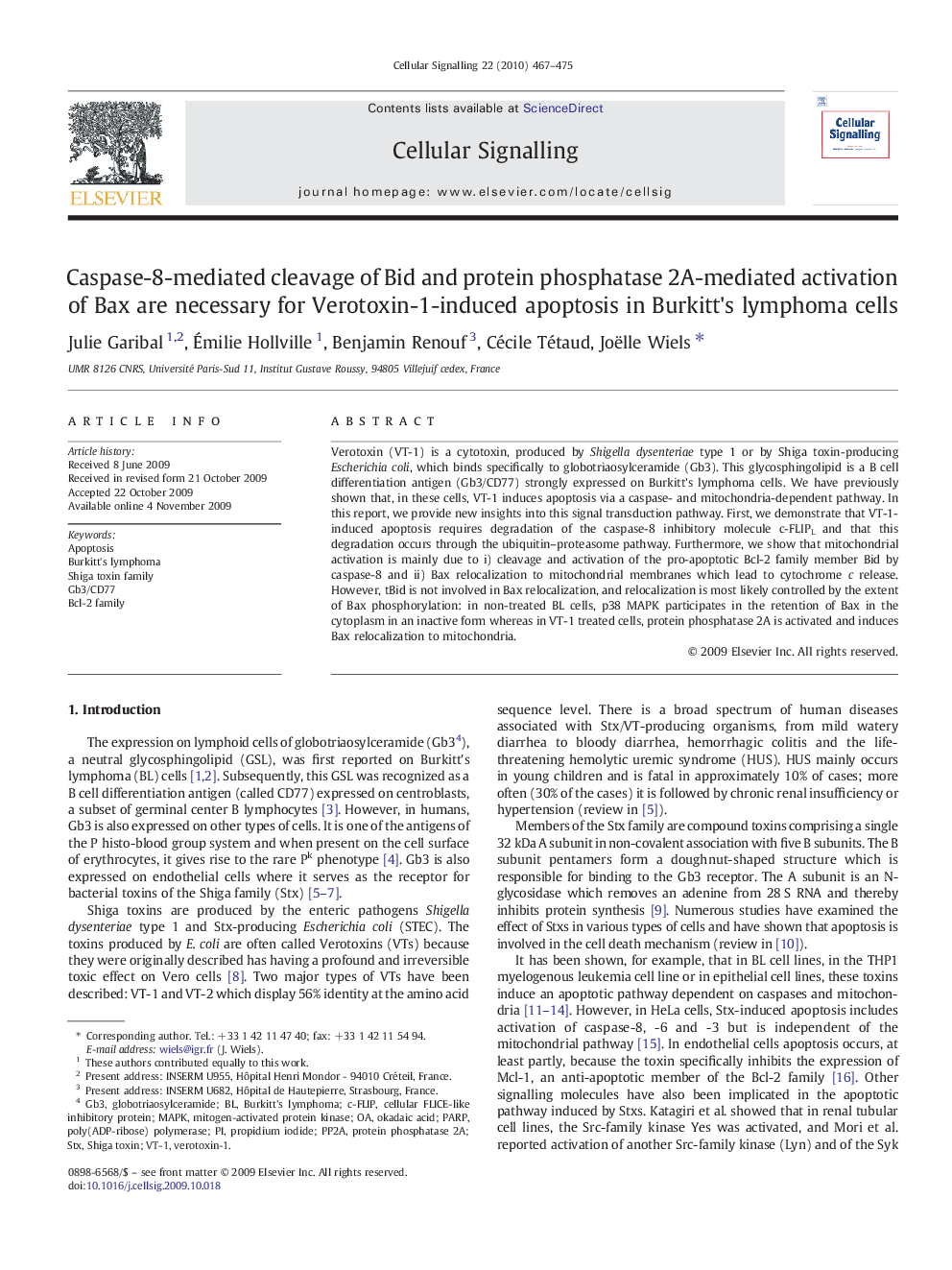| Article ID | Journal | Published Year | Pages | File Type |
|---|---|---|---|---|
| 10815735 | Cellular Signalling | 2010 | 9 Pages |
Abstract
Verotoxin (VT-1) is a cytotoxin, produced by Shigella dysenteriae type 1 or by Shiga toxin-producing Escherichia coli, which binds specifically to globotriaosylceramide (Gb3). This glycosphingolipid is a B cell differentiation antigen (Gb3/CD77) strongly expressed on Burkitt's lymphoma cells. We have previously shown that, in these cells, VT-1 induces apoptosis via a caspase- and mitochondria-dependent pathway. In this report, we provide new insights into this signal transduction pathway. First, we demonstrate that VT-1-induced apoptosis requires degradation of the caspase-8 inhibitory molecule c-FLIPL and that this degradation occurs through the ubiquitin-proteasome pathway. Furthermore, we show that mitochondrial activation is mainly due to i) cleavage and activation of the pro-apoptotic Bcl-2 family member Bid by caspase-8 and ii) Bax relocalization to mitochondrial membranes which lead to cytochrome c release. However, tBid is not involved in Bax relocalization, and relocalization is most likely controlled by the extent of Bax phosphorylation: in non-treated BL cells, p38 MAPK participates in the retention of Bax in the cytoplasm in an inactive form whereas in VT-1 treated cells, protein phosphatase 2A is activated and induces Bax relocalization to mitochondria.
Related Topics
Life Sciences
Biochemistry, Genetics and Molecular Biology
Biochemistry
Authors
Julie Garibal, Ãmilie Hollville, Benjamin Renouf, Cécile Tétaud, Joëlle Wiels,
